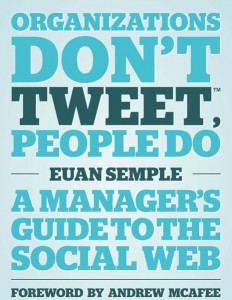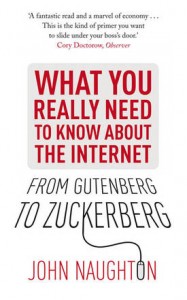Now and again I find time to read books about work-related stuff. Here are three I have been tucking into recently.
John Naughton is a hero of mine. His weekly column in The Observer is required reading, and A Brief History of the Future is a wonderful primer on the origins of the internet. His latest book is a treasure trove of information which works just as well for the net newbie as it does the veteran of the interwebs.

Another book, another hero. Now at innovation software firm Spigit, James Gardner was once of the DWP where he implemented the ‘Idea Street’ innovation prediction market. His Little Innovation Book is a marvellously concise introduction to innovating in big organisations, and in Sidestep and Twist he outline how the big, game-changing breakthroughs tend to be adaptations of existing ideas rather than anything genuinely new.

Euan Semple is one of the best bloggers on social software, and following from his work with the BBC a few years ago, he understands the frustrations of trying to implement new ways of working within corporate structures. Organisations Don’t Tweet… is a great introductory work, in which nonetheless I found loads of nuggets of inspiration and learning – as well as a few reminders of things I ought to know but had forgotten. Buy this book for your boss!


